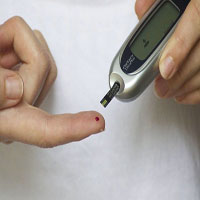Barriers to dietary modifications for people living with type 2 diabetes in a rural indigenous Guatemalan community

Submitted: 27 July 2021
Accepted: 1 September 2021
Published: 16 September 2021
Accepted: 1 September 2021
Abstract Views: 2215
PDF: 291
HTML: 49
HTML: 49
Publisher's note
All claims expressed in this article are solely those of the authors and do not necessarily represent those of their affiliated organizations, or those of the publisher, the editors and the reviewers. Any product that may be evaluated in this article or claim that may be made by its manufacturer is not guaranteed or endorsed by the publisher.
All claims expressed in this article are solely those of the authors and do not necessarily represent those of their affiliated organizations, or those of the publisher, the editors and the reviewers. Any product that may be evaluated in this article or claim that may be made by its manufacturer is not guaranteed or endorsed by the publisher.
Similar Articles
- Rizki Andriani, Aghnia Kamila, Roofi Asma Putri, Arif Fadhillah, Sabrina Helmi, Delia Septiani, The effect of mindful eating on dietary behaviour and fasting blood glucose in type 2 diabetes mellitus patients , Healthcare in Low-resource Settings: Vol. 12 No. 3 (2024): Transforming Healthcare in Low-Resource Settings: a Multidisciplinary Approach Towards Sustainable Solutions, Part III
You may also start an advanced similarity search for this article.

 https://doi.org/10.4081/hls.2021.10002
https://doi.org/10.4081/hls.2021.10002



